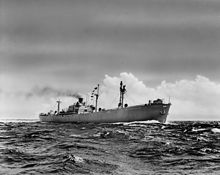 | |
| Company type | Private |
|---|---|
| Industry | Freight transport, shipping |
| Founded | 1920 in New York City |
| Fate | closed 1970s |
Key people |
|
Blidberg Rothchild Company was a shipping company founded by Allan Blidberg and Sylvester Rothschild in New York City, United States. The shipping company has is start with a previous company Blidberg and Sagen Company founded by Tryggve Sagen and Allan Blidberg. Tryggve Sagen owned a ship in Oslo, Norway before coming to the United States in 1919. Sylvester Rothschild was born in 1896 in Sweden, he was a finance officer in Gothenburg. Rothschild came to the US in 1919 and started the shipping company with Sagen. Blidberg and Sagen Company had shipping routes from New York to Scandinavian and Baltic ports. Sagen was president, Blidberg vice president and Sylvester Rothschild was the Secretary for the shipping company. Sylvester Rothschild was from Gothenburg, Sweden, where he was the vice-consul. In the 1930s Tryggve Sagen departed the company and the firm was renamed Blidberg Rothchild Company. The company had offices in Gothenburg and Norway. Blidberg Rothchild Company worked with an affiliated company Eastport Steamship Co of New York. Blidberg Rothchild Company also worked with an affiliated company, Bridgeport Steamship Line of New York, a New Haven Railroad company. [1]

